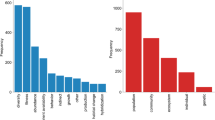Abstract
The Beverton--Holt recruitment model can be derived from arguments about evolution of life history traits related to foraging and predation risk, along with spatially localized and temporarily competitive relationships in the habitats where juvenile fish forage and face predation risk while foraging. This derivation explicitly represents two key biotic factors, food supply (I) and predator abundance (R), which appear as a risk ratio (R/I) that facilitates modelling of changes in trophic circumstances and analysis of historical data. The same general recruitment relationship is expected whether the juvenile life history is simple or involves a complex sequence of stanzas; in the complex case, the Beverton--Holt parameters represent weighted averages or integrals of risk ratios over the stanzas. The relationship should also apply in settings where there is complex, mesoscale variation in habitat and predation risk, provided that animals sense this variation and move about so as to achieve similar survival at all mesoscale rearing sites. The model predicts that changes in food and predation risk can be amplified violently in settings where juvenile survival rate is low, producing large changes in recruitment rates over time.
Similar content being viewed by others
References
Beamish, R.J., Mahnken, C. and Neville, C.M. (1997) Hatchery and wild production of Pacific salmon in relation to large-scale, natural shifts in the productivity of the marine environment. ICES J.Mar.Sci. 54, 1200-1215.
Beverton, R.J.H. and Holt, S.J. (1957) On the Dynamics of Exploited Fish Populations(Fisheries Investigations, Ser. 2, Vol. 19). UK Ministry of Agriculture and Fisheries, London.
Beyer, J.E. (1989) Recruitment stability and survival-simple sizespecific theory with examples from the early life dynamics of marine fish. Dana 7, 45-147.
Christensen, V. and Pauly, D. (1992) ECOPATH II-a software for balancing steady-state models and calculating network characterists. Ecol.Modelling 61, 169-185.
Coaronado, C. and Hilborn, R. (1997) Spatial and temporal factors affecting survival in coho salmon (Oncorhynchus kisutch) in the Pacific Northwest. Can.J.Fish.Aquat.Sci. 55, 2067-2077.
Drinkwater, K.F. and Myers, R.A. (1987) Testing predications of marine fish and shellfish landings from envirnomental variables. Can.J.Fish.Aquat.Sci. 44, 1568-1573.
Friendland, K.D., Reddin, D.G. and Kocik, J.F. (1993) Marine survival of North American and European Atlantic salmon: effects of growth and recruitment. ICES J.Mar.Sci. 50, 481-492.
Kuhn, T.S. (1962) The Structure of Scientific Revolutions. University of Chicago Press, Chicago.
Lockwood, S.J. (1980) Density-dependent mortality in 0-group plaice (Pleuronectes platessaL.) populations. J.Cons.Int. Explor.Mer 39148-153.
MacCall, A.D. (1990) Dynamic Geography of Marine Fish Populations. Washington Sea Grant Program, University of Washington Press, Seattle, 153 pp.
Mangel, M. and Clark, C.W. (1988) Dynamic Modeling in Behavioral Ecology. Princeton University Press, Princeton, NJ, 308 pp.
Myers, R.A. and Barrowman, N.J. (1996) Is fish recruitment related to spanwner abundance?Fishery Bull. 94, 707-724.
Myers, R.A. and Cadigan, N.G. (1993) Density-dependent juvenille mortality in marine demersal fish. Can.J.Fish.Aquat.Sci. 50, 1576-1590.
Pauly, D. (1980) On the interrelationships between natural mortality, growth parameters, and mean environmental temperature in 175 fish stocks. J.Cons.Int.Explor.Mar. 39, 175-192.
Polovina, J.J. (1984) Model of a coral reef ecosystem I. The ECOPATH model and its application to French Frigate Shoals. Coral Reefs 3, 1-11.
Sparre, P. (1991) Introduction to multispecies virtual population analysis. ICES Mar.Sci.Symp. 193, 12-21.
Spencer, P.D. and Collie, J.S. (1997) Effect of nonlinear predation rates on rebuilding the Georges Bank haddock (Melanogrammus aeglefinus) stock. Can.J.Fish.Auqat.Sci. 54, 2920-2929.
Steele, J.H. and Henderson, E.W. (1984) Modeling long-term fluctuations in fish stocks. Science 224, 985-987.
Stevens, L.E., Shannon, J.P. and Blinn, D.W. (1997) Colorado River benthic ecology in Grand Canyon, Arizona, USA: dam, tributary, and geomorphological influences. Regulated Rivers: Res. Manage. 13, 129-149.
Ursin, E. (1982) Stability and variability in the marine ecosystem. Dana 2, 51-68.
Van Winkle, W., Rose, K.A., Winemiller, K.O., DeAngelis, D.L., Christensen, S.W., Otto, R.G. and Shuter, B.J. (1993) Linking life history theory and individual-based modeling to compare responses of different fish species to environmental change. Trans.Am.Fish.Soc. 122, 459-466.
Van Winkle, W., Coutant, C.C., Jager, H.I., Mattice, J.S., Orth, D.J., Otto, R.G., Railsback, S.F. and Sale, M.J. (197) Uncertainty and instream flow standards; perspectives based on hydropower research and assessment. Fisheries 22(7), 21-22.
Walters, C.J. and Collie, J.S. (1988). Is research on environmental factors useful to fisheries management? Can.J.Fish.Aquat.Sci 45, 1848-1854.
Walter, C.J. and Juanes, F. (1993) Recruitment limitation as a consequence of natural selection for use of restricted feeding habitats and predation risk taking by juvenile fishes. Can.J.Fish. Aquat.Sci. 50, 2058-2070.
Walters, C.J. and Parma, A.M. (1996) Fixed exploitation rate strategies for coping with effects of climate change. Can.J.Fish. Aquat.Sci. 53, 148-158.
Author information
Authors and Affiliations
Rights and permissions
About this article
Cite this article
Walters, C., Korman, J. Linking recruitment to trophic factors: revisiting the Beverton--Holt recruitment model from a life history and multispecies perspective. Reviews in Fish Biology and Fisheries 9, 187–202 (1999). https://doi.org/10.1023/A:1008991021305
Issue Date:
DOI: https://doi.org/10.1023/A:1008991021305




